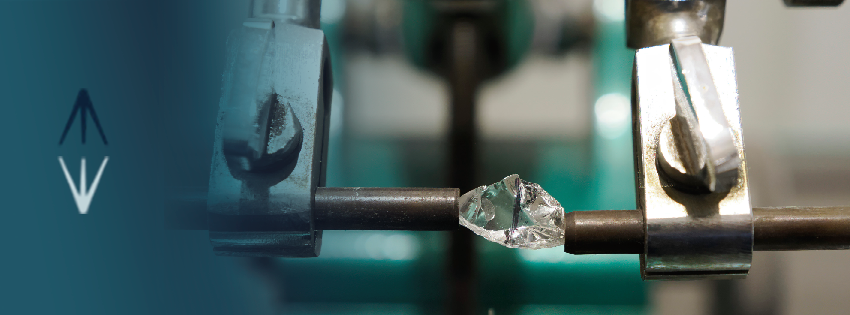At diamantes.com, we promote ethical and transparent jewelry, aligned with the new demands of the market. One of the most relevant aspects today is diamond traceability, a key concept to ensure trust, sustainability, and responsibility in every purchase.
Introduction
In a world where transparency and ethics have become fundamental values for consumers, diamond traceability emerges as one of the top priorities in the jewelry industry. This process not only guarantees the legitimate origin of each gemstone, but also protects human rights and promotes sustainable practices. For the modern consumer, knowing where a diamond comes from is just as important as its cut or brilliance.
What is diamond traceability?
Diamond traceability refers to the ability to track a diamond’s journey from its origin (mine or lab) to the final consumer. This system includes documentation and digital records that allow each stage of the supply chain to be known: extraction, cutting, polishing, certification, distribution, and sale.
This concept has become central in contemporary jewelry, as it allows buyers to make more informed decisions based on transparency, ethics, and sustainability values.

Importance of traceability for the modern consumer
Following the pandemic and the rise of conscious consumers, the demand for products with verifiable origins has intensified. Diamonds are no exception. Today, people want to buy jewelry that is not associated with conflict, labor exploitation, or environmental harm.
In addition, diamond traceability strengthens consumer trust in brands. Knowing that a jeweler can show the entire journey of their product adds credibility and reputation—two essential elements to compete in an increasingly demanding market.
Technologies enabling traceability in jewelry
Modern traceability relies on cutting-edge digital and technological tools:
- Blockchain: ensures tamper-proof records of the diamond’s journey.
- QR codes and digital certifications: allow buyers to scan and verify diamond information in real time.
- RFID tags and micro-engravings: facilitate physical tracking of each stone along its supply chain.
Leading companies have already incorporated these solutions, ensuring efficient and fraud-resistant traceability.
Success stories in traceability implementation
Brands like Tiffany & Co. and De Beers have implemented robust traceability systems. De Beers, for example, developed its Tracr platform, based on blockchain, which allows diamonds to be tracked from the mine to the point of sale, ensuring their authenticity and ethical origin.
In Spain, companies like Tous have also embraced traceability as a differentiating value, offering their customers details about the journey of each piece of jewelry.
Impact of traceability on industry sustainability and ethics
Diamond traceability not only improves transparency but drives a shift toward a more sustainable and responsible industry. It reduces the chance of trading in “conflict diamonds,” encourages fair mining practices, and promotes the wellbeing of producing communities.
For consumers who prioritize ethical consumption, purchasing traceable diamonds is a way to support social and environmental causes—without giving up the beauty of a unique jewel.
Conclusion
Diamond traceability represents much more than a trend: it’s a profound transformation in how we conceive and consume luxury. It allows buyers to learn the story behind each stone, make ethical choices, and trust brands that value integrity. As technology evolves, this practice will become even more accessible and essential in the jewelry market.
Frequently Asked Questions
How can I know if a diamond has traceability?
Check the diamond’s certificate and ask about its history. Responsible brands offer digital reports, QR codes, and traceable data on their products.
What’s the difference between a traceable diamond and a regular one?
A traceable diamond has a documented and verifiable origin, whereas a regular one may lack information about its source and extraction conditions.
Do all lab-grown diamonds have traceability?
Most do, since they are produced in controlled environments. However, not all provide complete documentation, so it’s important to check with the supplier.
What certifications support diamond traceability?
Certifications such as GIA, IGI, or the Kimberley Process, combined with blockchain technologies, ensure the traceability and authenticity of the diamond.




